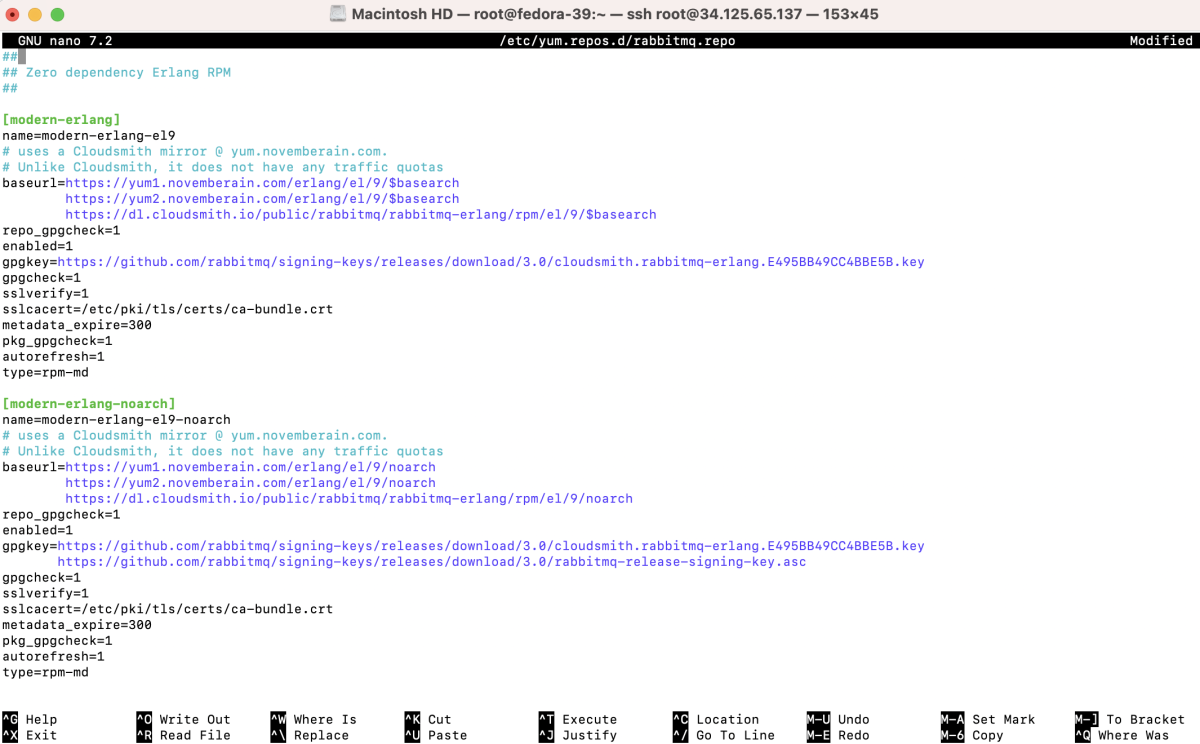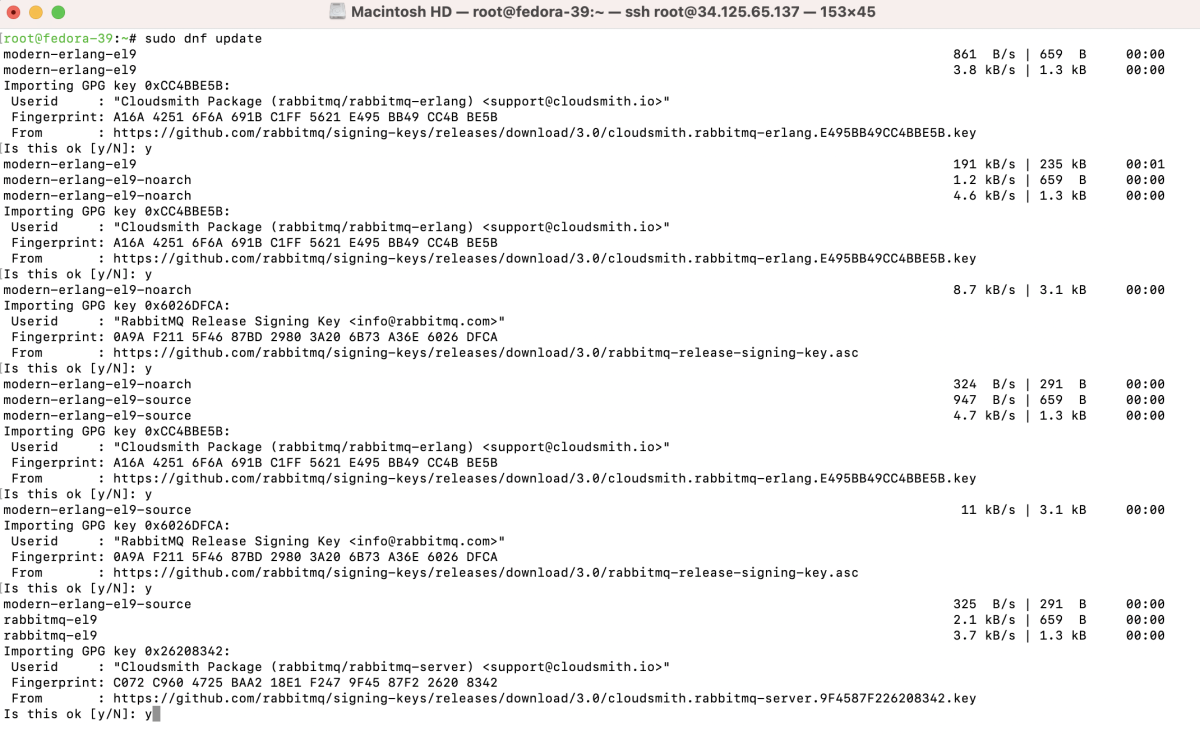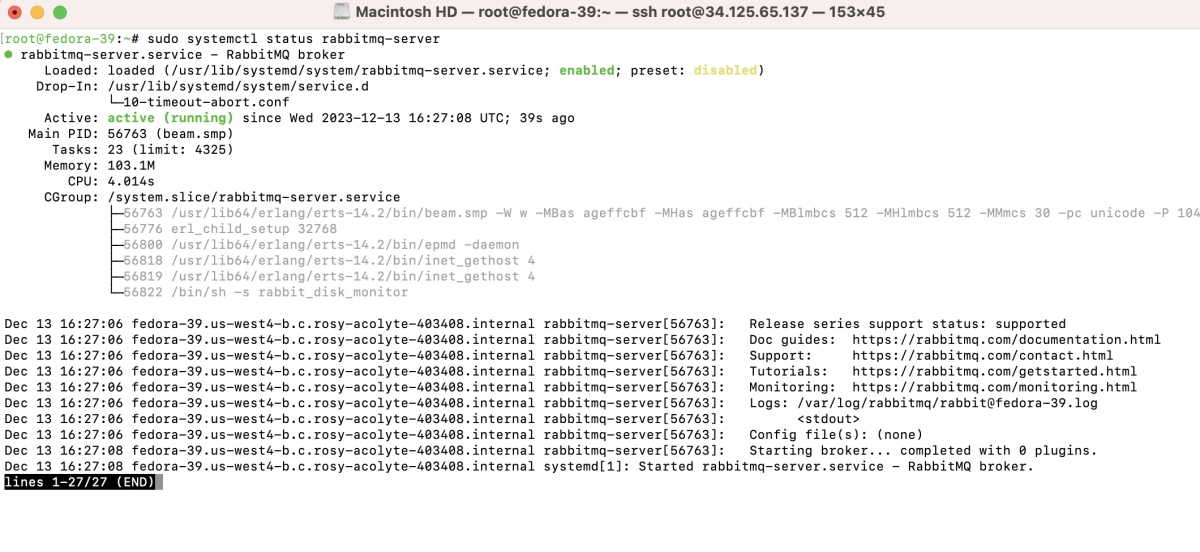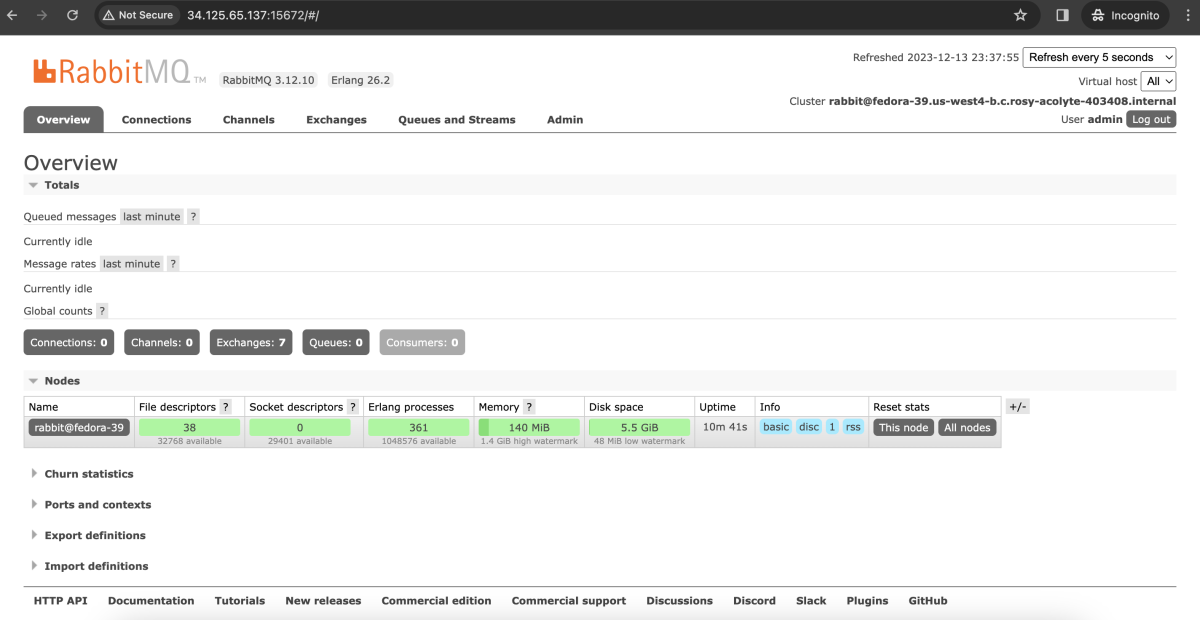To install RabbitMQ on Fedora 39, follow the steps below.
Step 1 : Update your system to ensure you have the latest packages and dependencies.

Step 2 : Import RabbitMQ, Erlang key:
Import the necessary GPG keys for RabbitMQ and Erlang.

Step 3 : Add RabbitMQ, Erlang repository:
Create a new file named rabbitmq.repo in the /etc/yum.repos.d/ directory with the following content:

Step 4 : Update your system once more to apply the changes from the new repository.

Step 5 : Install required dependencies for RabbitMQ.

Step 6 : Install Erlang and RabbitMQ packages.

Step 7 : Start the RabbitMQ service.

Step 8 : Enable RabbitMQ to start on boot.

Step 9 : Check the status of the RabbitMQ service to ensure it's running without issues.

Step 10 : Enable the RabbitMQ management plugin to access the web management interface.

Step 11 : Create an administrative user for RabbitMQ management interface.

Step 12 : If you are using the firewall, open the necessary ports for RabbitMQ.
 Step 12 : Access the RabbitMQ management interface:
Step 12 : Access the RabbitMQ management interface:
- Open your web browser and go to http://ip:15672.

- Log in with the admin credentials you created.

Congratulations! You have successfully installed RabbitMQ on Fedora 39 and can now manage your message broker system.